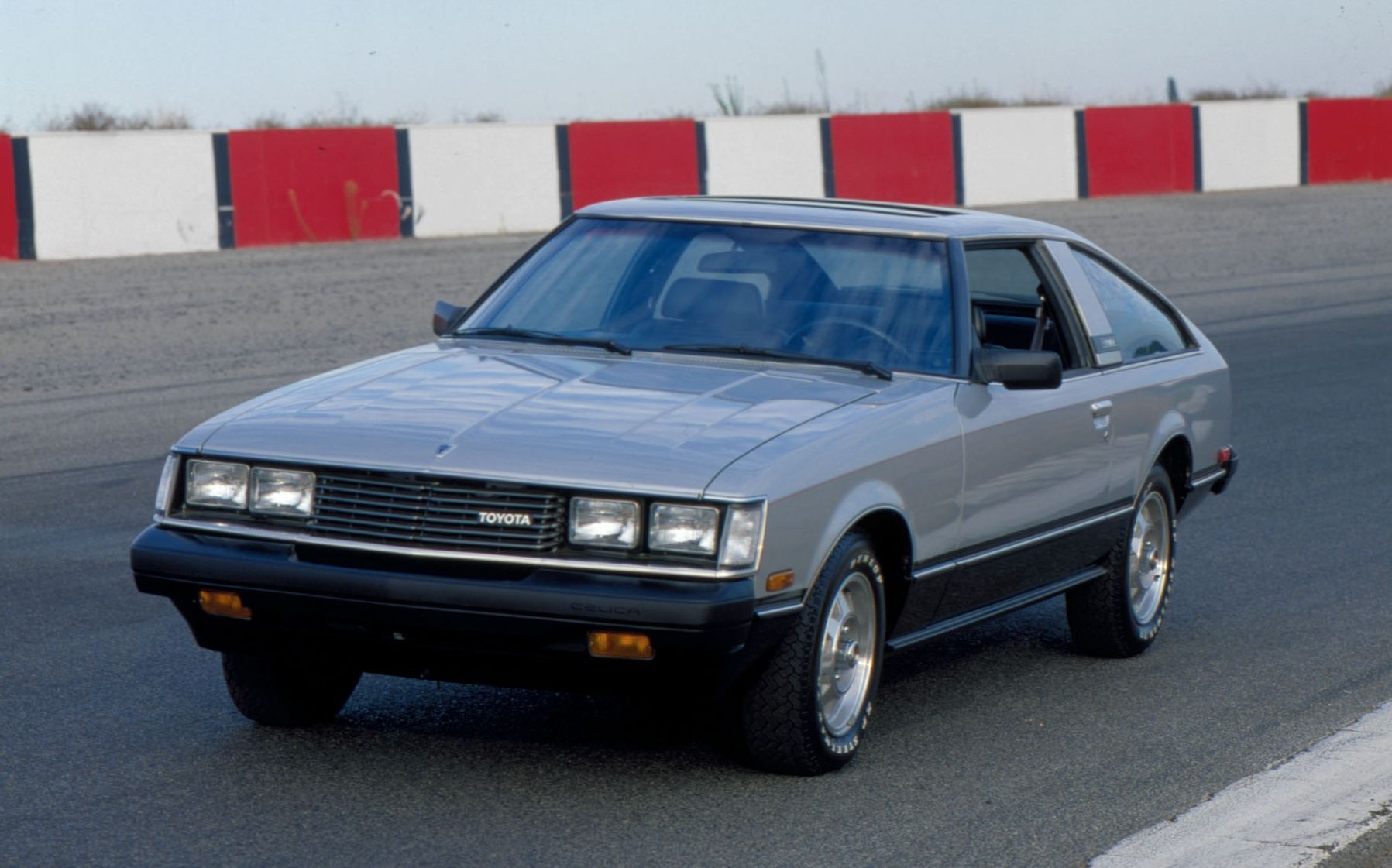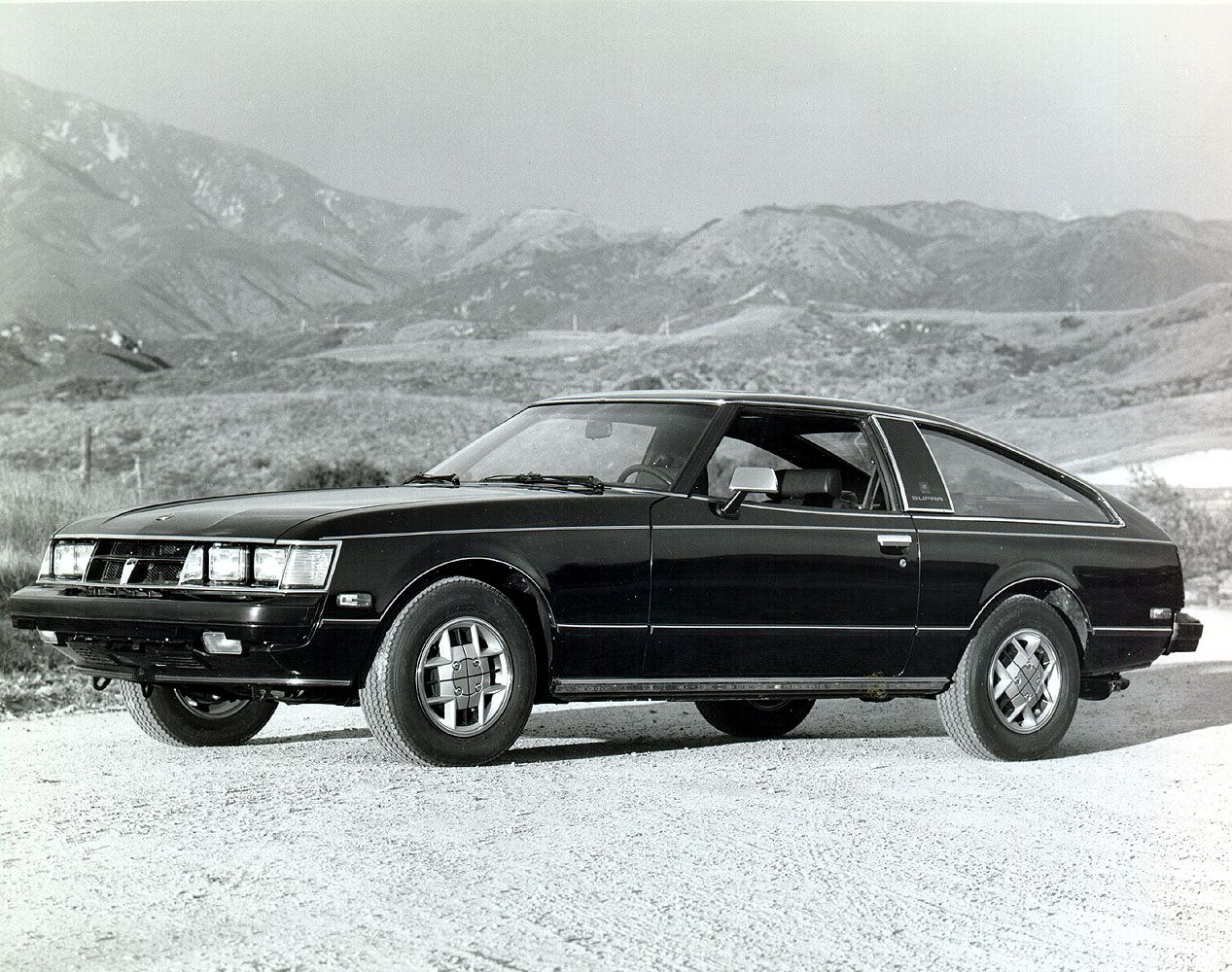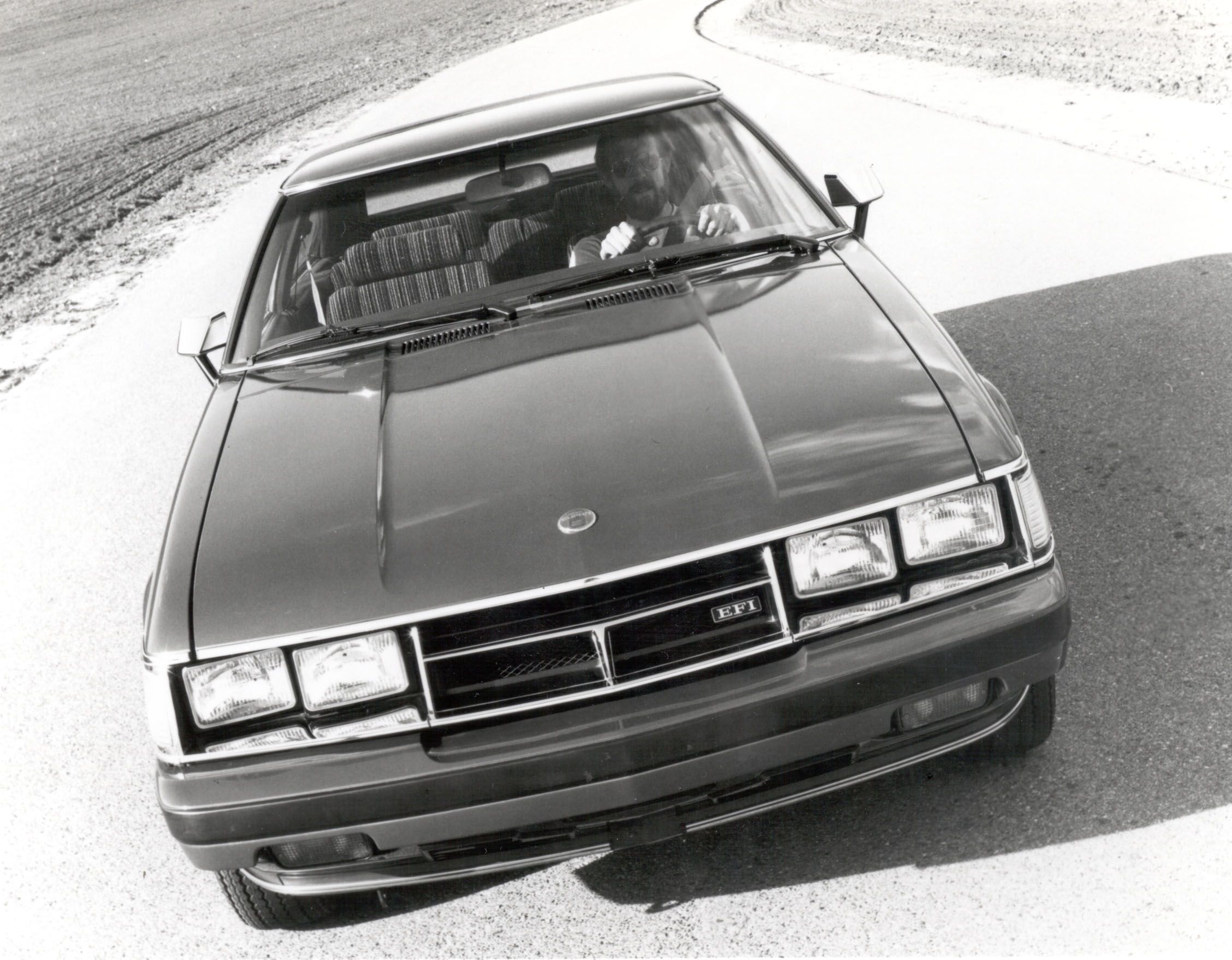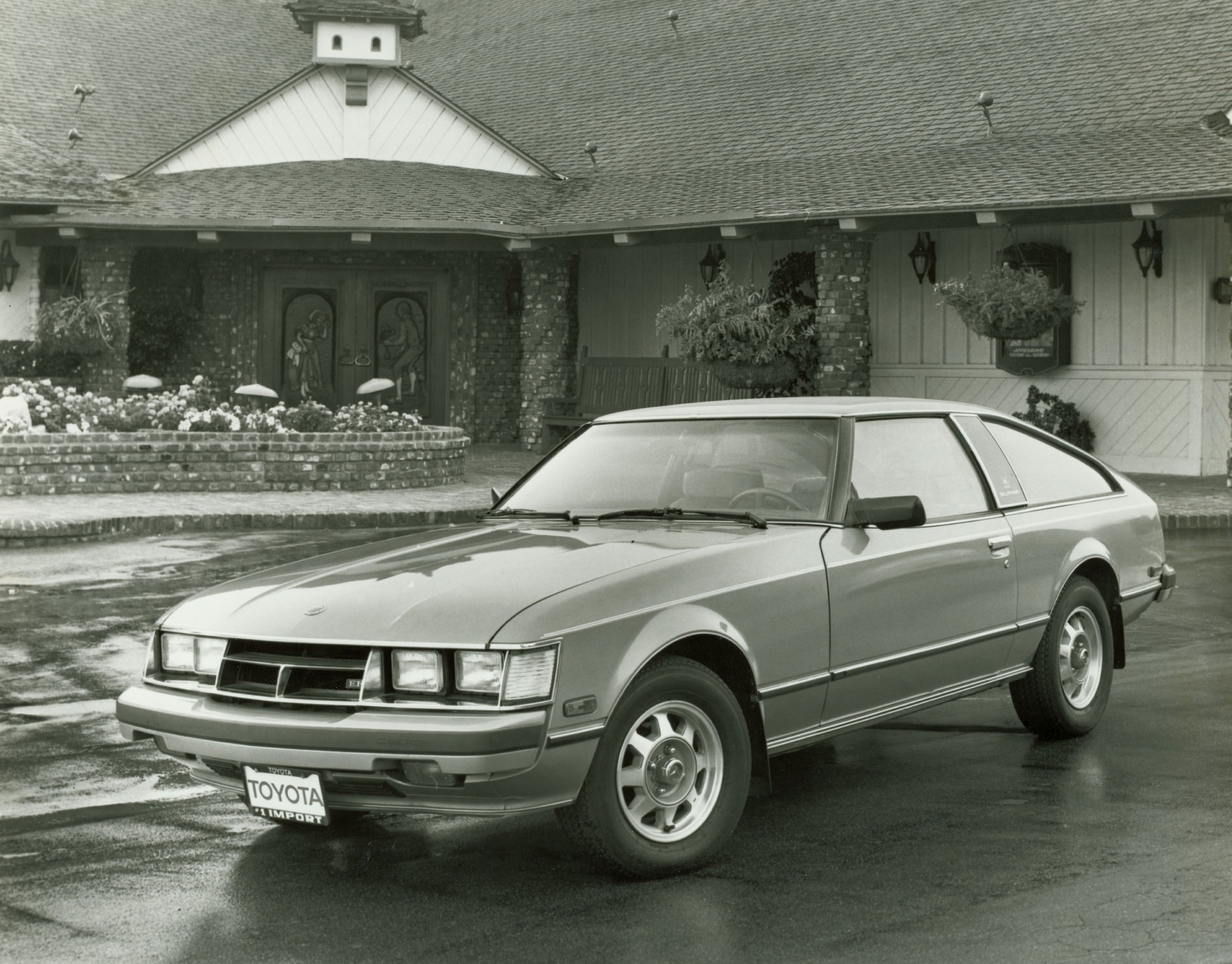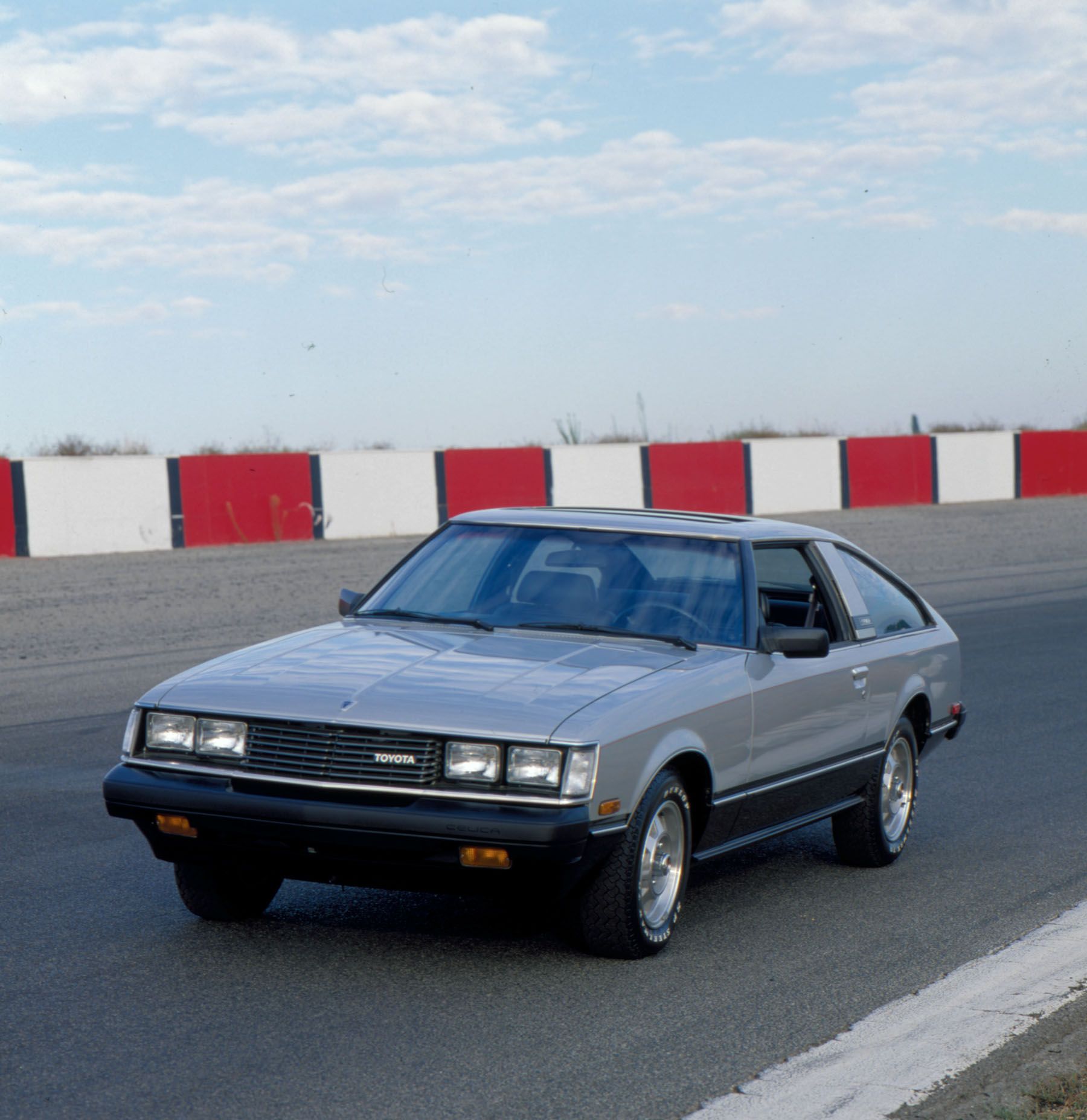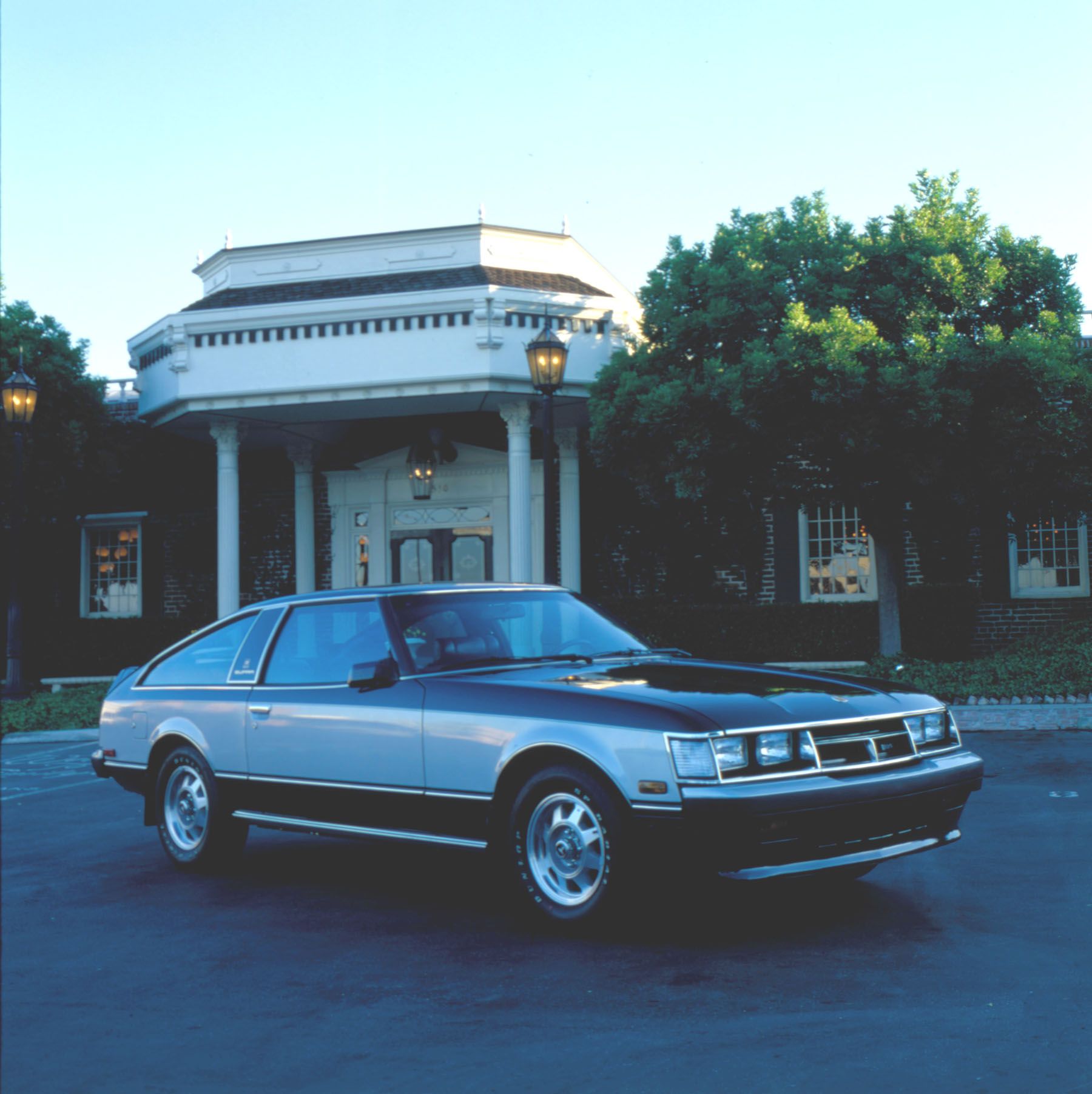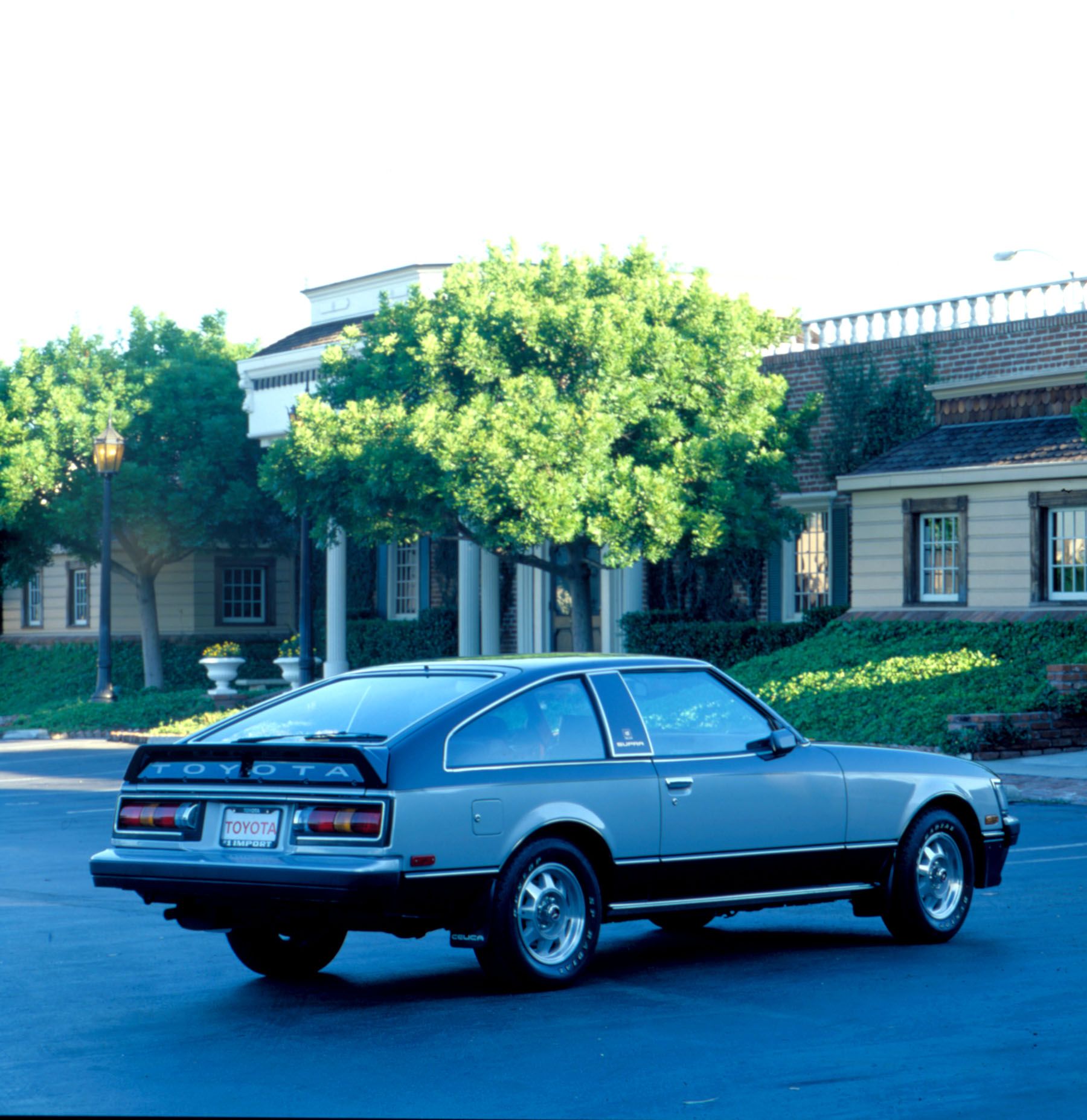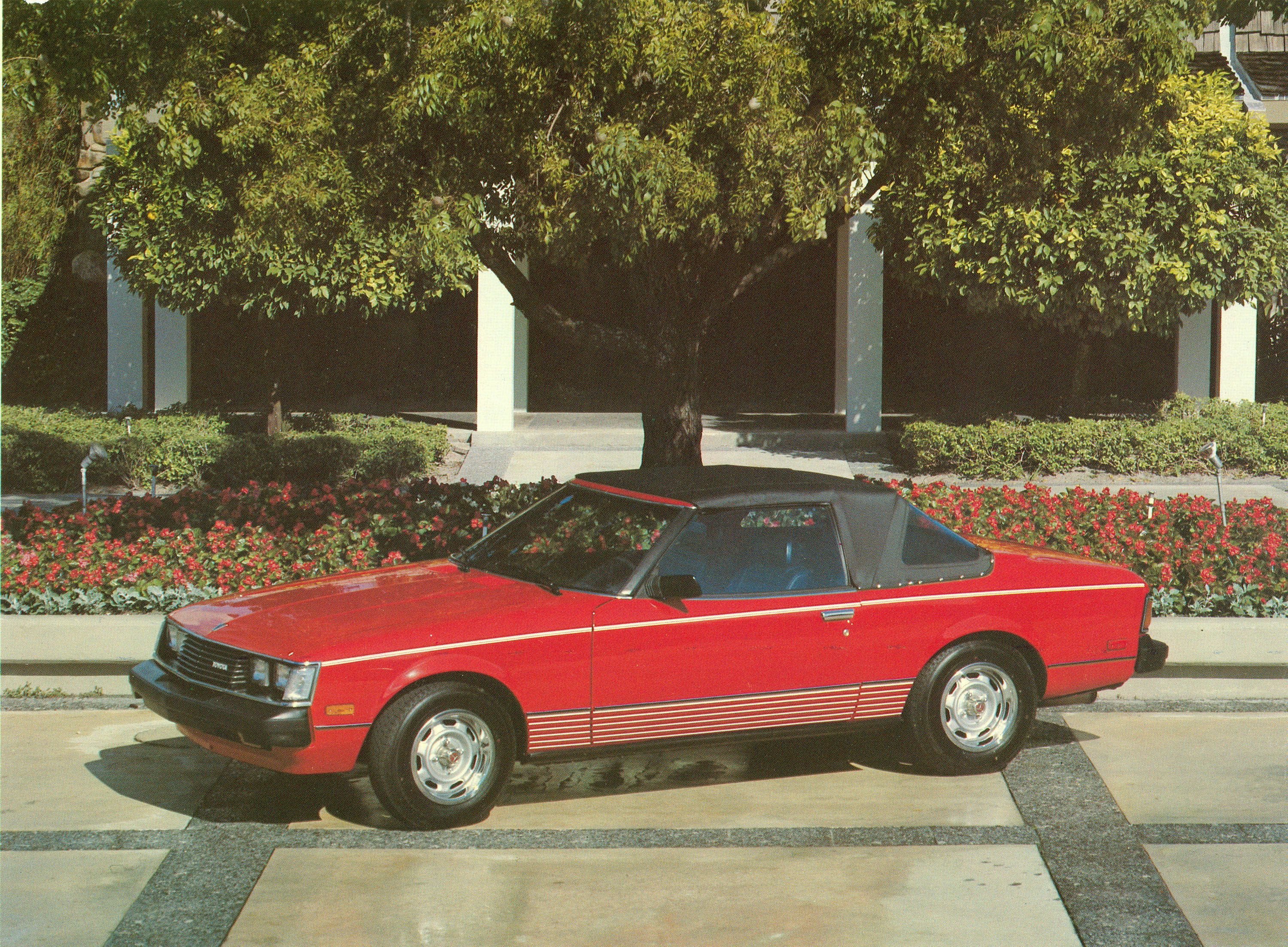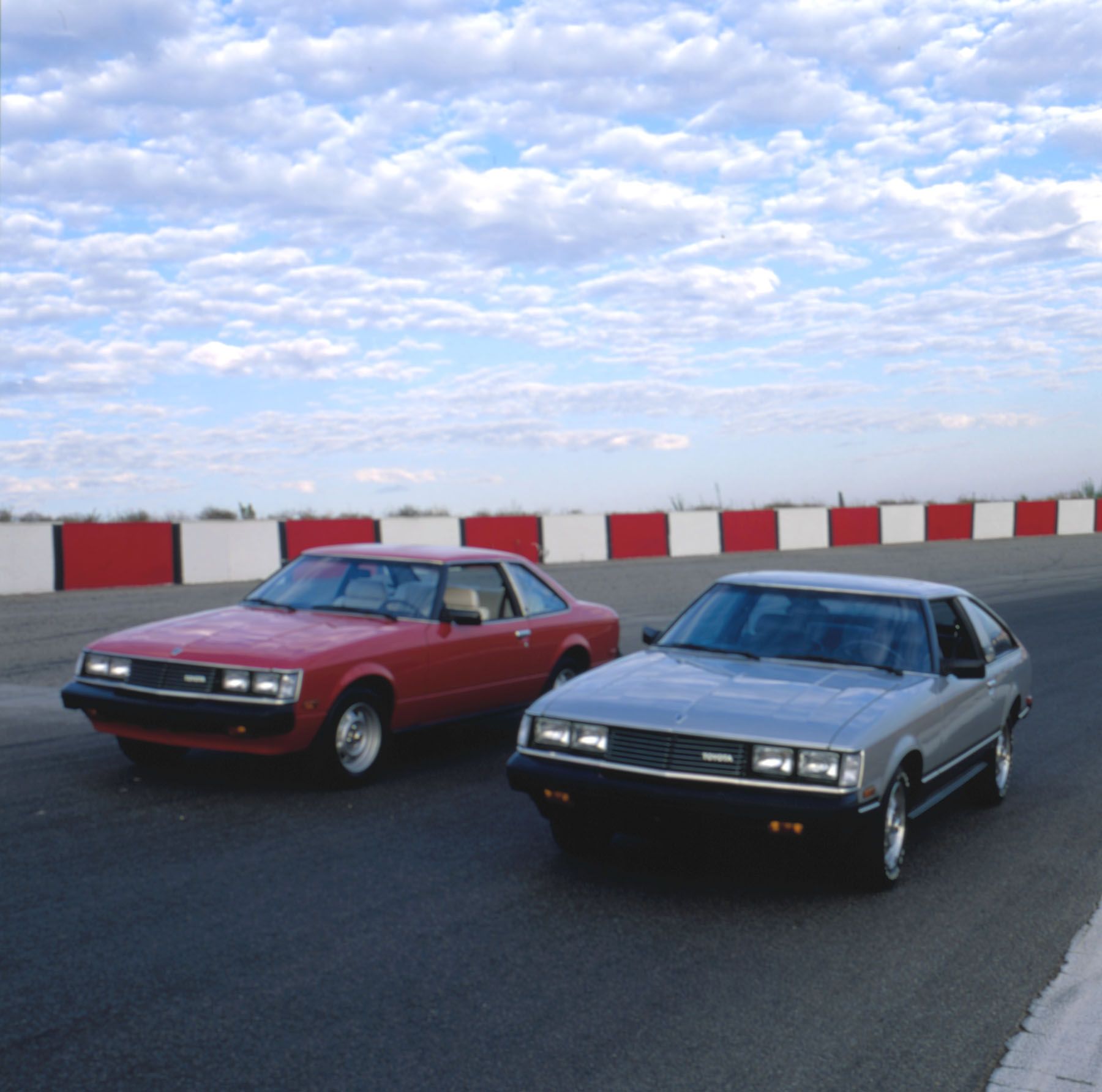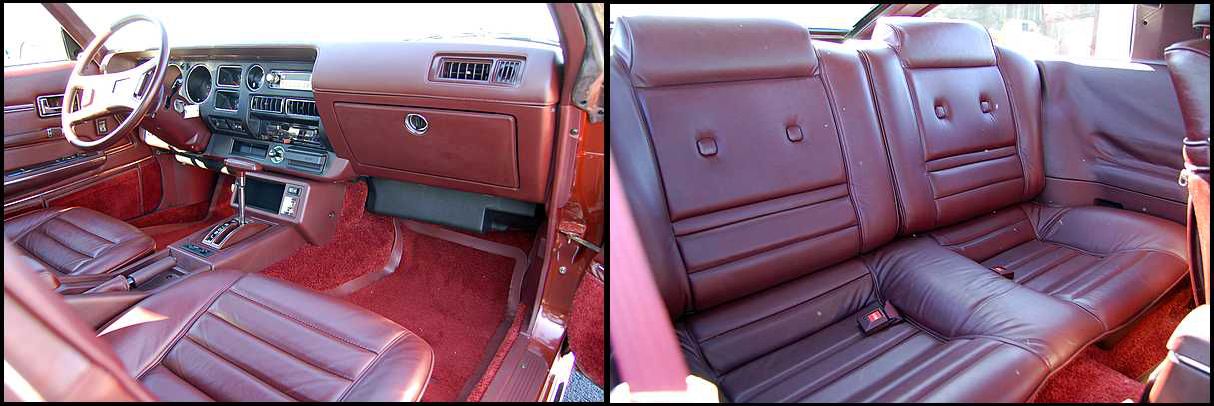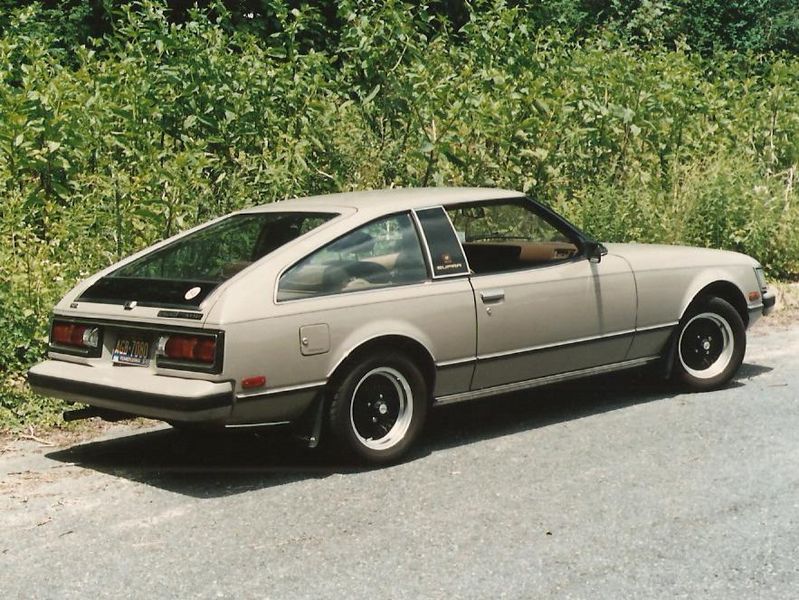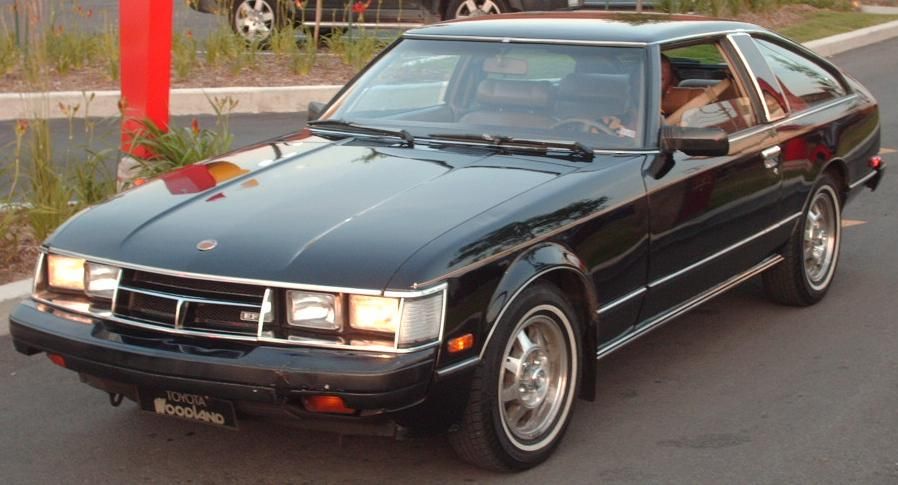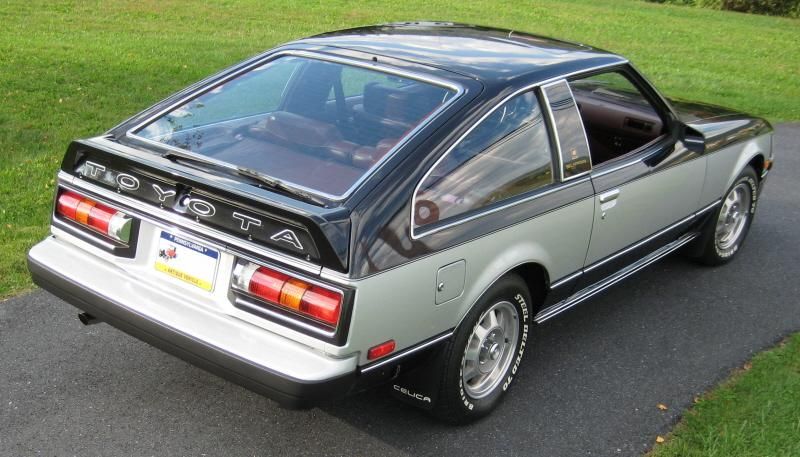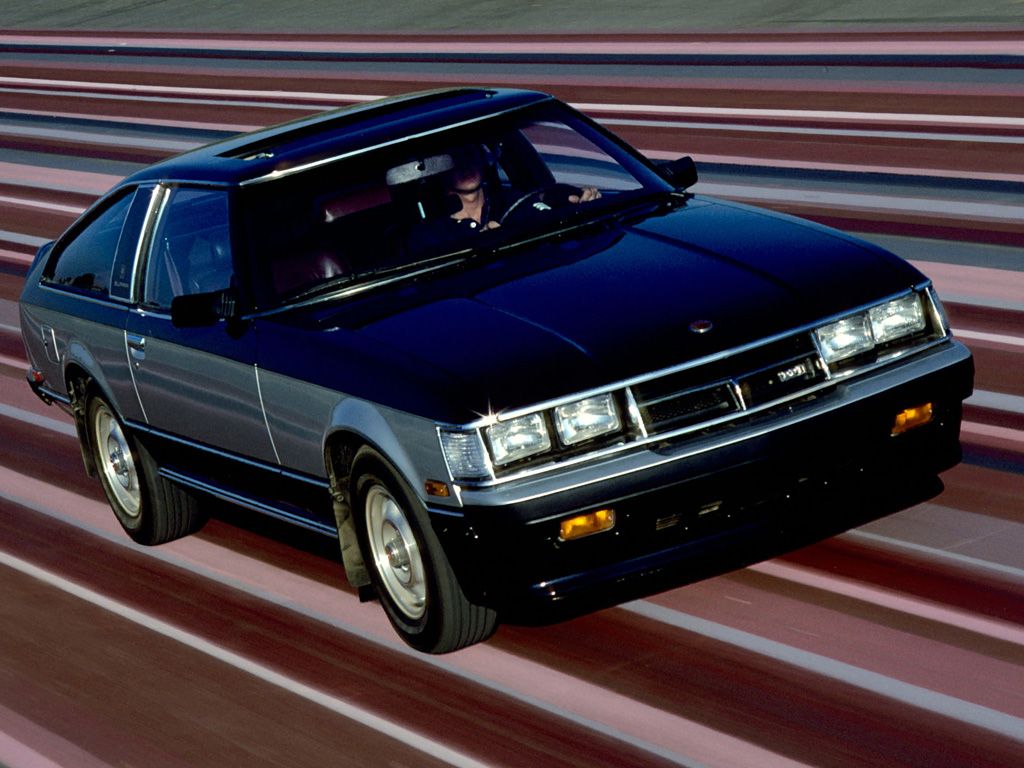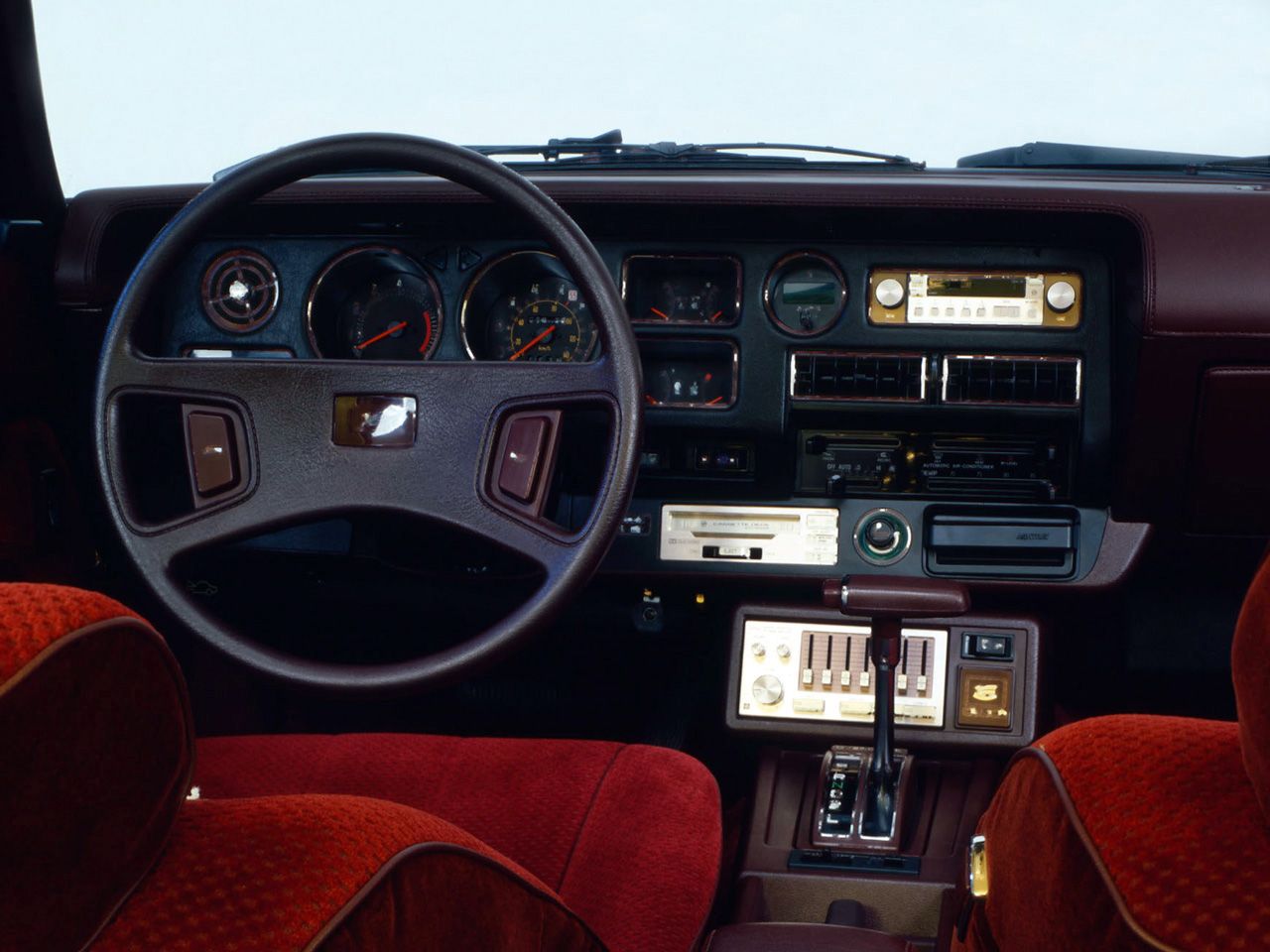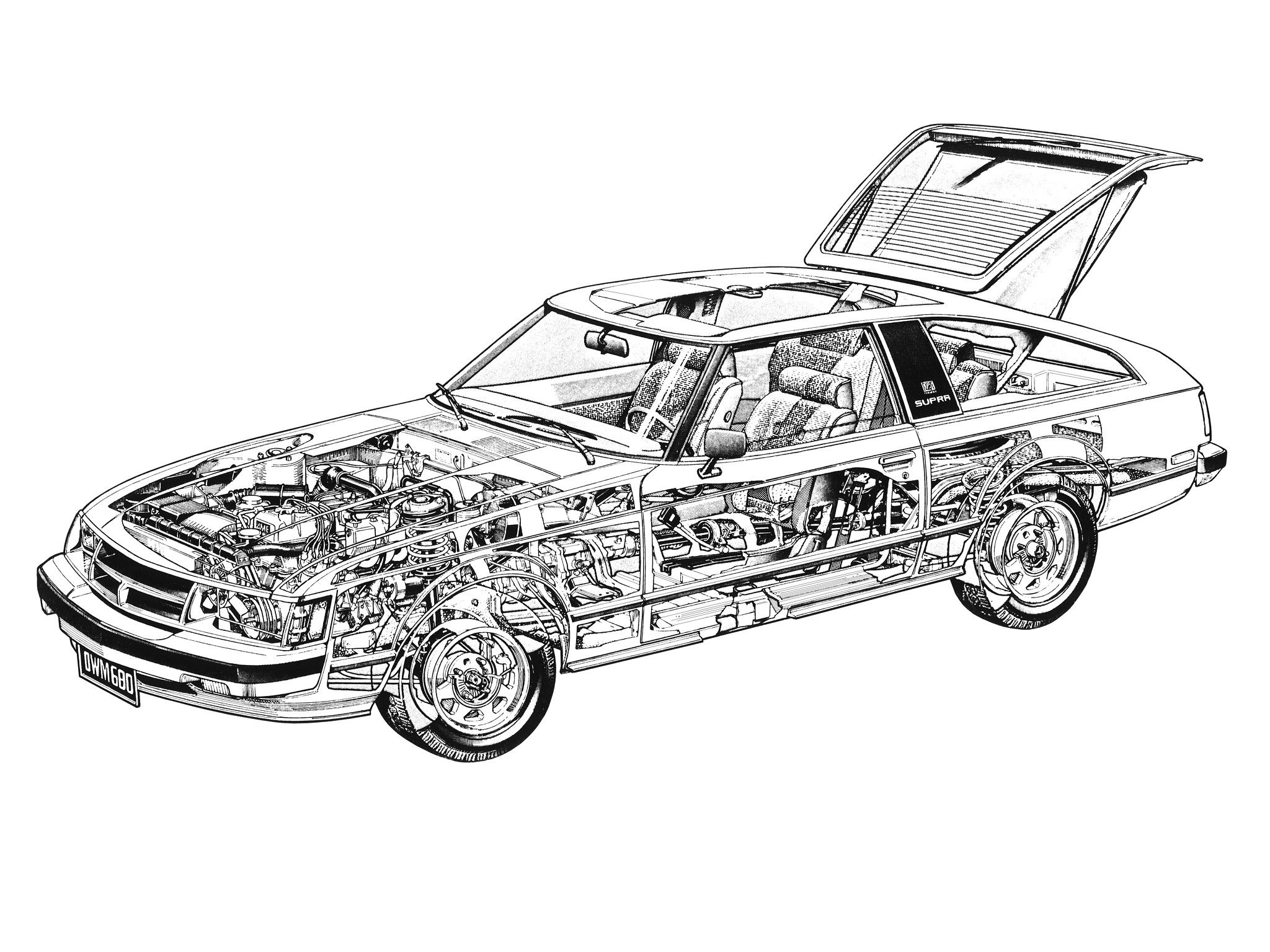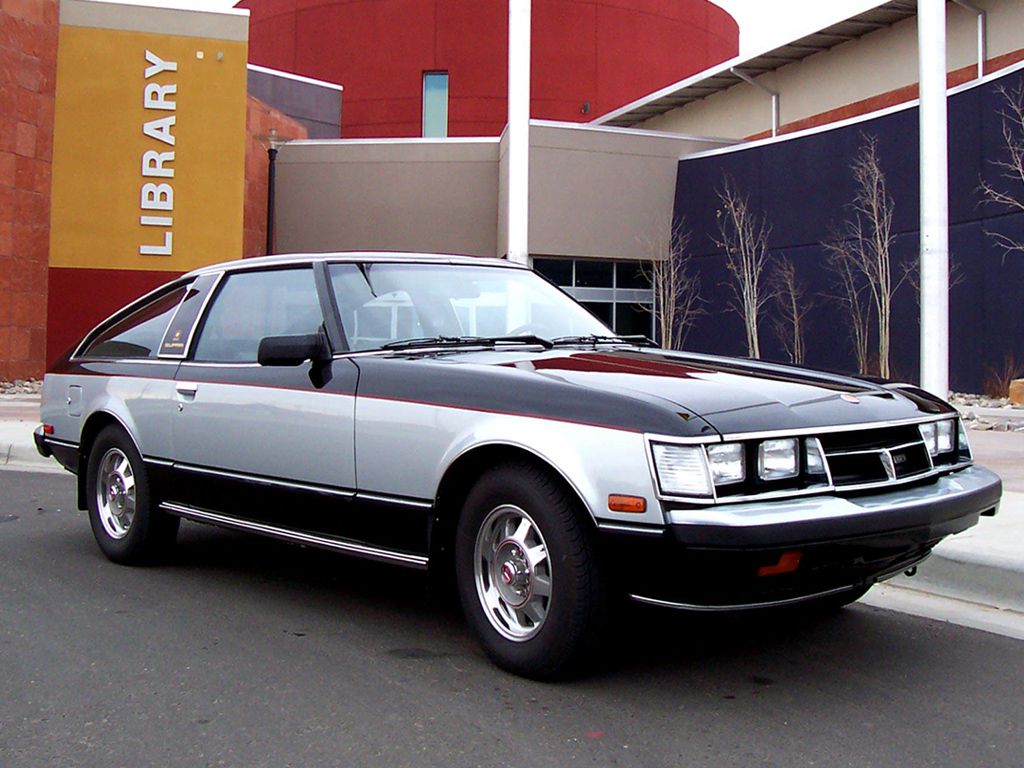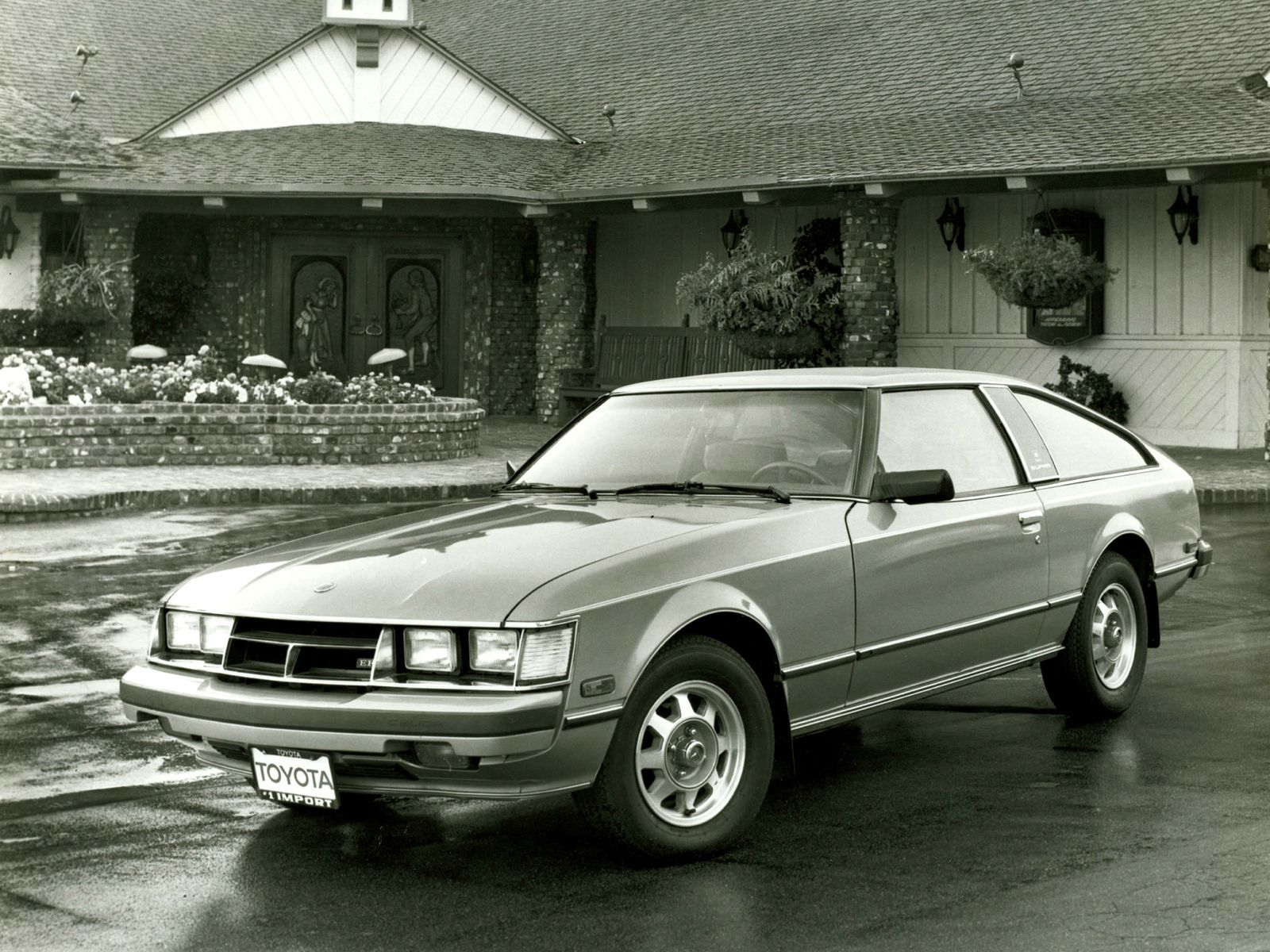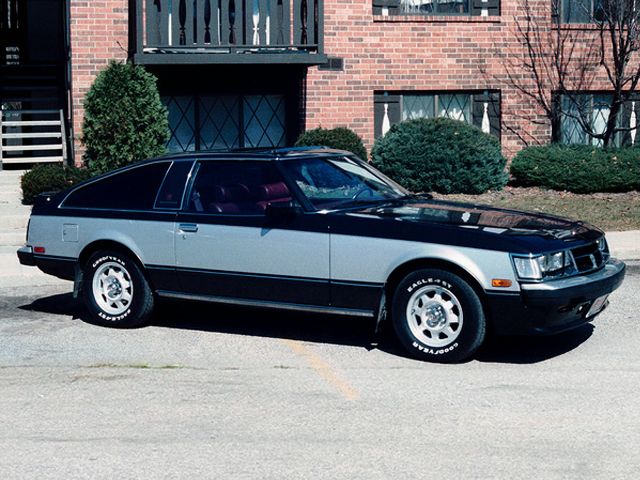Back in the the 1970's, the Celica->ke311 was fighting the good sports car->ke506 fight for Toyota->ke88 as rival models, particularly the Nissan 240Z, burst into the scene. But it wasn't until the latter part of that decade when Toyota decided to ramp up its efforts in the sports car market. That's when the Toyota Supra->ke355 was born. Based on the Celica until its third incarnation, the Supra became the sports car Toyota put up against some of the best its rivals had to offer. It's popularity grew to such great lengths that the Japanese automaker even created a new logo just for the Supra.
The Toyota Supra may no longer exist and even with reports of its revival bubbling in the surface for years now, we can always look fondly at the first-generation Supra and say "that's where it all began."
Click past the jump to read more about the 1979 - 1981 Toyota Supra.
1979 - 1981 Toyota Supra
- Make: Array
- Model: 1979 - 1981 Toyota Supra
- Engine/Motor: inline-6
- Horsepower: 110
- [do not use] Vehicle Model: Array
First Generation (1979 – 1981)
Exterior
1979
The Supra debuted in Japan in 1978 as a high-performance version of the Celica hatchback. Toyota stretched the Celica’s body by just over 5 inches by adding in longer front fenders and hood, giving the Supra a more cab-rearward feel.
1980
The 1979 model year marked the first of many revisions for the Supra, but this time around, they were relatively minor. Toyota slightly revised the exterior mirrors, added in standard 14-by-5.5-inch aluminum wheels, “CELICA” in white letters across the rear hatch and available integrated mud flaps.
1981
The only change of note in 1980 was the addition of the Sports Performance Package. This package added in front and rear spoilers and raised-white-letter tires.
Interior
1979
Much like the rest of the cars in its era, the Supra was a super-simple car on the inside, when compared to today’s cars. However, relative to the cars of its era, the Supra was about as high-tech as they came. It featured optional power windows, power door locks, cruise control and special door trim. As for standard features, the Supra included: a center-console-mounted map light and flip-top storage area; tilt steering; seatback pockets; rear-hatch-mounted tonneau cover; and a four-speaker, AM/FM radio with an analog clock. To help you better time the shifts, the Supra also featured a standard tachometer.
1980 - 1981
In 1980, the interior was slightly changed with the addition of a restyled center console and an advanced-for-the-era quartz digital clock. As optional features starting in 1980, buyers could get leather seating and an unheard-of automatic climate-control system. This design continued through 1981.
Drivetrain
1979 - 1980
The Supra was introduced in Japan with a pair of engines that both produced 110 horsepower and 136 pound-feet of torque: a 1,988 cc in-line six-cylinder and a 2,563 cc in-line six-cylinder. Toyota dubbed the former engine the M-EU and the latter the 4M-E. Along with these engines, Toyota offered up a standard five-speed manual transmission or a four-speed automatic. When the Supra made it to the U.S. in January of 1979, it came only with the 4M-E engine. In 1980, the drivetrain carried on unchanged.
1981
In 1981, Toyota dropped the 4M-E engine in favor of the 5M-E, which took the in-line six-cylinder’s displacement up to 2,759 cc. This netted the Supra 116-horsepower and 145 pound-feet of torque. Also added in was a new A43D four-speed automatic transmission with an updated final-drive ratio. The 1981 Supra timed out at 10.24 seconds to 60 mph and it could clear the 1/4-mile in 19.5 seconds at 77.7 mph.
Suspension and Braking
1979
Not only was the Supra powerful and modern for its era and class, but it also featured handling that was slightly ahead of its time. The 1979 Supra had disc brakes all the way around to bring it to a halt quickly. Keeping the coupe on the road was a MacPherson strut front suspension with a stabilizer bar combined with a four-link rear suspension with coil springs on the backside.
1980
With exception to the new aluminum wheels for a lower unsprung weight, the Supra’s suspension and braking system remained unchanged for 1980.
1981
We already spoke of the Sports Performance Package earlier; well, it did more than just make the 1981 Supra look better. It added in a sport suspension system to help keep the sport coupe glued to the road. The base suspension remained the same for 1981.
Second Generation (1982 - 1986)
Exterior
1982
In 1982, Toyota fully redesigned the Supra, giving it new pop-up headlight and an all-around sportier presence. The body grew by just shy of 2 inches in overall length, 2.7 inches in width and 1.2 inches in height. Despite the growth, the wheelbase actually shrunk by 0.6 inches. It also gained about 200 pounds of extra weight heading into the second generation. The Supra was also divided into two classes, the P-Type (Performance) and L-Type (Luxury).
1983
The only changes to the outside in 1983 included the addition of a power antenna, headlight washers on P-Types, standard mud flaps and new “Celica Supra” badges.
1984
The 1984 model received a few minor updates. The biggest updates were the all-new wraparound front turn signals, which gave the Supra a sleeker look. Additionally, the taillights were refreshed; a large “SUPRA” logo was added to the rear hatch; the rear hatch and bumper now matched the car’s body color; and the door handles were revise to pull up for entry instead of sideways.
1985
In 1985, the Supra received a new two-piece rear spoiler, a revised rear hatch sunshade and auto-off headlights.
1986
The 1986 model year was supposed to be the debut year for the third-generation Supra, but production delays forced Toyota to continue offering the second generation. This brought the elimination of the L-Type Supra, leaving only the P-Type. The only other change of note was the addition of the now-mandatory center, high-mounted taillight.
Interior
1982 - 1983
The second-gen Supra started off its interior changes with standard power windows, door lock and mirrors, an 85 mph analog speedo (optional digital dash available), standard cruise control, and a standard five-speaker AM/FM audio system. Buyers could opt for a cassette player with a 105-watt amp and equalizer, and a sunroof. There were no changes to the interior in 1983.
1984
Toyota spent some time revising the Supra’s steering wheel, cruise-control interface and door lock switches to go along with the all-new 130 mph speedometer. The optional cassette player audio system from the previous year also became a standard feature for 1984.
1985 - 1986
In 1985, Toyota revised the Supra’s interior ever so slightly. On the negative side, Toyota eliminated the leather interior option on the L-Type. Added in for 1985 was illuminated entry with fade out, a standard theft-deterrent system and side-view mirror defoggers. Production delays in the third-gen Supra forced Toyota to carry over the interior features from 1985.
Drivetrain
1982
In 1982, the Supra received an all-new 2,759 cc, double-overhead-cam (DOHC) engine dubbed the 5M-GE. This engine put down an aggressive-for-the-era 145 horsepower and 155 pound-feet of torque that sprinted the 3,000-pound sports car to 60 mph in 9.8 seconds. It also clocked in at 17.2 seconds at 80 mph in the 1/4-mile.
As standard, the 1982 Supra came with a five-speed manual transmission, but buyers could opt for an A43DL four-speed automatic transmission on the L-Type.
1983
For 1983, the Supra’s 5M-GE engine received an electronic-advance distributor and a slight boost in output to 150 horsepower and 159 pound-feet of torque. Additionally, the P-Type Supra received a set of 4.10 gears and the L-Type received 3.73 gears in place of the 3.72 gears in the all 1982 models.
The optional A43DL automatic transmission was replaced by an electronically controlled A43DE unit with a “Power” mode that moved the shift point to higher in the rpm range for quicker acceleration.
1984
In 1984, Toyota significantly upgraded the 5M-GE engine with a new intake manifold with D-shaped intake runners and a 9.2-to-1 compression ratio. This combined to bump the aging six-cylinder’s power to 160 horsepower and 163 pound-feet of torque in five-speed models. All automatic models retained the same output numbers as the 1983 model year.
Toyota also modified the rear end on both the five-speed and automatic models, giving them 4.30 and 4.10 gearing, respectively.
1985 - 1986
In 1985, Toyota bumped the six-cylinder’s output to 161 horsepower and 169 pound-feet of torque in both the automatic and manual variants. The engine also received some new ancillaries in the form of a revised throttle-position sensor, a new exhaust-gas-recirculation system and a knock sensor.
These new components likely had more to do with emission requirements rather than increasing performance. This engine allowed the Supra to hit 60 mph in 8.4 seconds and clear the 1/4-mile in 16.1 seconds at 85 mph. In 1986, the driveline remained unchanged.
Suspension and Braking
1982 - 1986
In 1982, the Supra received a Lotus-tuned independent suspension with a variable-assist power steering system, MacPherson struts on the front and a semi-trailing arm suspension with coils on the back end. Four-wheel disc brakes did the stopping. The Supra’s braking and suspension systems remained unchanged through the entire second generation.
Third Generation (1986.5 – 1992)
Exterior
1986.5
After some delays in production, the third-generation Supra finally debuted midway through the 1986 model year. This also marked the first year as its own model, as the umbilical cord between the Celica and Supra was cut, leaving the Supra to fend for itself and boy did it ever… The revised body wasn’t a shocking overhaul, as it retained the same basic wedge design with the pop-up headlights. The body was basically just cleaned up a little, making it look the part of a high-end sports car. Also making its debut in this generation was the Sport-Roof Panel (aka Targa top).
the gen-III Supra shrunk in overall length to 181.9 inches – 1.6 inches shorter than the second-generation – but its width grew by exactly 1 inch, giving it a stouter appearance. The Supra’s weight also jumped to 3,389 pounds with a manual transmission and 3,516 pounds with an automatic transmission.
1987
Something huge came in 1987, but it wasn’t on the outside. The only change on the outside was the addition of standard headlight washers.
1988
In 1988, there was little to speak of in terms of exterior changes, as Toyota only eliminated the two-tone brown paint scheme and changed the spoiler-mounted brake light from a square to a trapezoid.
1989
The 1989 model year brought a few upgrades to the third-gen Supra. The biggest addition was the new “White Package,” which included white body moldings and wheels. Additionally, Turbo models received a three-piece rear wing with an LED spoiler-mounted brake light. Minor updates were also given to the taillights, front bumper, lower and upper grille, side-view mirrors, turn signals and fog lights.
1990
Nothing changed on the exterior in 1990 with the exception of a larger laminate protector in front of the rear wheels.
1991
In 1991, 16-by-7-inch five-spoke alloy wheels became standard across the board and a full-size spare tire was standard. The body moldings were all painted to match the body and the front-mounted “Supra” emblem was replaced by the Toyota emblem. The 1991 model year was the first year for the all-metal sliding roof as an available option.
1992
In 1992, the only change was that the base Supra no longer included the Sport-Roof Panel. Everything else remained the same.
Interior
1986.5 - 1987
For the third generation, the Supra received standard automatic climate control, tilt and telescoping wheel, cruise control, power windows, mirrors and door locks, and a top-level audio system. This was really the springboard generation for the Supra becoming a premium sports car not only on the outside, but the inside too. In 1987, no major changes were made on the inside.
1988
On the inside, the Supra’s seats received new fabric that changed the pattern from squares to lines. Also, new covering on the climate control and gear shifter changed their colors from light gray to dark gray.
1989
The interior was almost unnoticeably updated in 1989 with the addition of coat hooks to the B-pillars and rear-mounted seat pockets. In terms of function, the old two-point seatbelts were replaced with three-point ones.
1990
The 1990 model year rolled in with the addition of a driver-side airbag; a new driver-side switch bezel; a two-piece lower dash panel in place of 1990’s one-piece panel; and the deletion of the memory lever on the steering column.
1991
In 1991, the Supra received a new speedo with additional lines; new Shadow Gray and Deep Red interior colors; and new 6.5-inch front speakers in place of the previous model year’s 5-inch speakers.
1992
In 1992, the only changes were the elimination of the rear bins in models with the optional subwoofer and a 10-speaker audio system with a CD player became an option.
Drivetrain
1986.5
The third-generation Supra ushered in the most-powerful engine the Supra had seen to date: a 3.0-liter, in-line six-cylinder engine dubbed the 7M-GE. This new six-pot engine pushed out 200 horsepower and 196 pound-feet of torque. This engine remained unchanged, in terms of power, through the remainder of the third generation.
The engine mated to a standard five-speed manual transmission and a new A340E four-speed automatic transmission as optional.
1987 - 1988
The 1987 model year brought the Supra to the verge of perfection when the Turbo model appeared for the first time with the 7M-GTE turbocharged 3.0-liter straight-six engine. Sure, its 230 horsepower and 246 pound-feet of torque were not massive increases over the base 3.0-liter, but it was the start of something huge for the model.
The new 7M-GTE hooked up to an upgraded R154 manual five-speed transmission as standard and the A340E four-speed automatic, as an option.
The drivetrain remained unchanged in 1988.
1989
In 1989, Toyota revised the engine-management system and updated the turbocharger system to squeeze an extra 2 horsepower 8 pound-feet of torque from the 7M-GTE engine, giving it 232 horsepower and 254 pound-feet of torque. Everything else remained unchanged.
1990
In 1990, the engines took a step back with a reduced redline, thanks to a heavier crankshaft and counterbalance on cylinders No. 2 and 5.
1991 - 1992
the only change in the final two years if the third-gen Supra was the 1992 revision of the automatic transmission’s shift points.
Exterior
1986.5
The third-generation Supra brought about the introduction of the optional Toyota Electronic Modulated Suspension (TEMS), which allowed the driver to select two suspension settings for the driving style. Additionally, the TEMS had a third setting that automatically engaged if it sensed hard driving (hard braking, wide-open throttle, etc.).
1987
The base Supra remained the same, but the Turbo model came standard with the Sports Package. This package included TEMS and a limited-slip differential. The Sports Package was optional on the base Supra.
1988 – 1992
Between 1988 and 1992, the suspension and braking systems in both Supra models remained the same.
Fourth Generation (1993 – 1998)
Exterior
1993 – 1998
The Supra became a true contender in the modern sports car realm with the introduction of the fourth generation in the 1993 model year. An all-new swooping body, fixed headlights, optional rear wing and a 0.3 (base) to 0.31 (Turbo) Cd all helped make this generation legendary. The Supra’s exterior remained unchanged through 1998.
The third-gen Supra came in at 3,210 pounds in its base format with 40 pounds added if you checked of the Sport Roof on the options list and an extra 55 pounds when the automatic transmission was added. The turbo variant came in at 3,417 pounds with the manual transmission and 3,427 pounds with the automatic trans. Both models measured 177.8 inches long, 71.3 inches wide and 49.8 inches high.
Interior
1993 – 1995
On the inside, the Supra was equally unchanged as the outside throughout the third generation. The base model came standard with cloth seats, a power driver seat, cruise, a tilt steering wheel, remote trunk release, auto climate control, power everything and an AM/FM/Cassette audio system.
The Turbo model added in power heated mirrors, and a leather-wrapped gear shifter and steering wheel.
1996 – 1998
The standard Supra and Turbo Supra remained the same, but Toyota added in an SE package that stripped down the base Supra to help lower its price to attract more buyers.
Drivetrain
1993 – 1995
In 1993, Toyota introduced an all-new pair of engines. As standard, the Supra came with a 3.0-liter in-line six-cylinder engine dubbed the 2JZ-GE. This engine produced 220 horsepower and 210 pound-feet of torque. It mated to a five-speed manual transmission as standard and had an optional four-speed automatic transmission.
The Turbo model really set the bar for sports car realm, as Toyota’s new 2JZ-GTE twin-turbocharged in-line six-cylinder punched out 320 horsepower and 315 pound-feet of torque. The Turbo model came standard with a Getrag six-speed manual transmission and a four-speed automatic as an option.
1996
Emission regulations bit the Supra Turbo in the tailpipe in 1996, as the standardization of the OBD-II system in the U.S. forced Toyota to equip the Supra Turbo with only a four-speed automatic transmission. Toyota just couldn’t get its manual transmission OBD-II compliant in time to make it in the 1996 model year.
The base model remained unchanged.
1997
While the base Supra remained the same, the Turbo model regained its six-speed Getrag manual transmission, as Toyota managed to get it OBD-II certified.
1998
The base Supra underwent a few changes in its final year in the U.S. First, the five-speed manual transmission was dropped, leaving only the four-speed automatic transmission. Secondly, the base engine received Toyota’s VVT-i system that bumped its output to 225 horsepower and 220 pound-feet of torque.
The Supra Turbo remained unchanged in this final model year with the exception of it being discontinued in CARB states.
Suspension and Braking
1993 – 1998
The base Supra featured a nearly perfect 51:49 weight distribution, making it very balanced in the twist. Combine this weight ratio with its fantastic independent suspension system and sticky rollers underneath it. This allowed it to hold up to 0.95 lateral Gs.
The Turbo model was a little more front-biased than the standard variant with its 53:47 weight distribution, but it held the track as well as its slower brother. The Turbo variant came standard with a four-channel track-tuned ABS system with Yaw control combined with an F1-inspired braking system. This allowed it to stop from 70 mph in only 149 feet.

